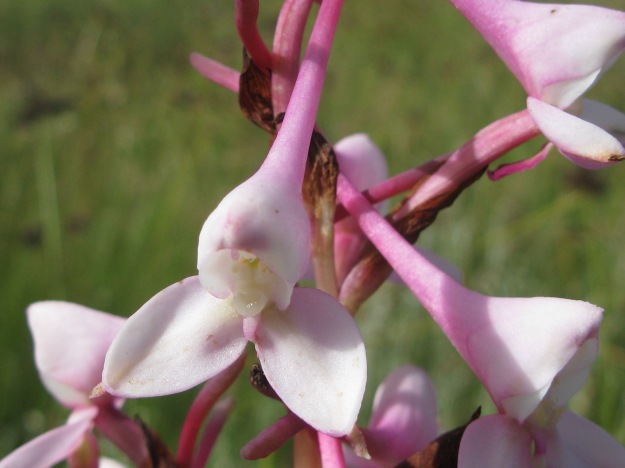ORCHIDACEAE Disa scullyi [Endangered]
Slender plant about 500 mm tall. It is found in swampy areas, in the midlands and in Mphendle and Estcourt. Leaves are 2-4, upright and usually folded together lengthwise. Petals upright, twisted to face forward, closing the spur entrance. Flowers spreading, facing down, pink or white with green lip and scentless. It flowers from December to February. Threats are habitat loss, disturbance of forestry plantations, competition from Alien invasive plants and development.
If you have seen this plant, please contact Suvarna Parbhoo, CREW programme: KZN Node Manager s.parbhoo@sanbi.org.za
Reference: LINDER H.P & KURZWEIL H. 1999. Orchids of Southern Africa: 218. A.A. Balkema, Rotterdam, Netherlands.
To view other Threatened plants in this series, go to the Midlands Conservancies Forum website: http://www.midlandsconservancies.org.za/threatenedplants/tplants.php


What a fantastic picture
LikeLike
So wonderful to see this flower up close… What intricate layering, tapering and overlapping! Inspiration for Merano glassblowers!? And fabric designers?!
LikeLike